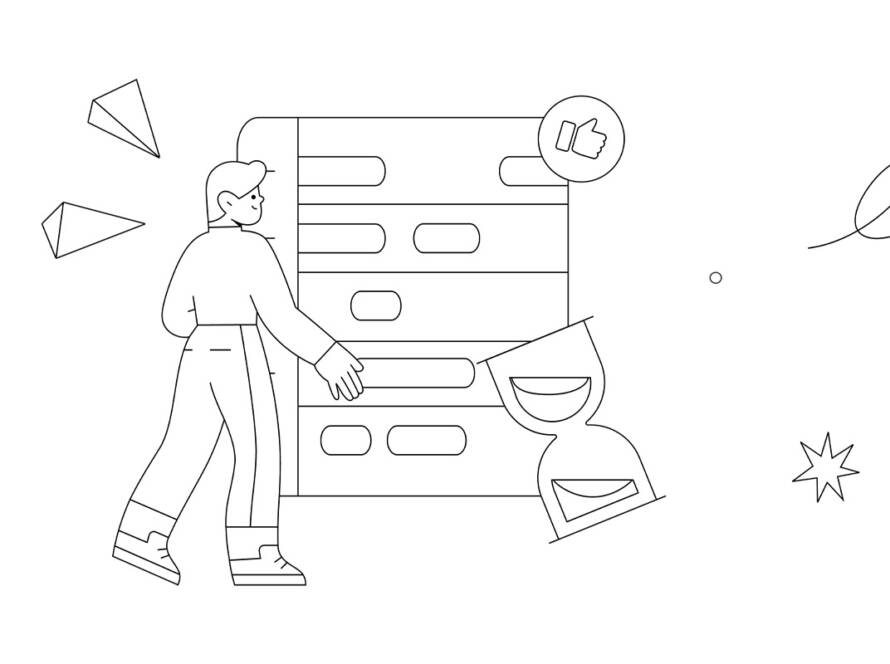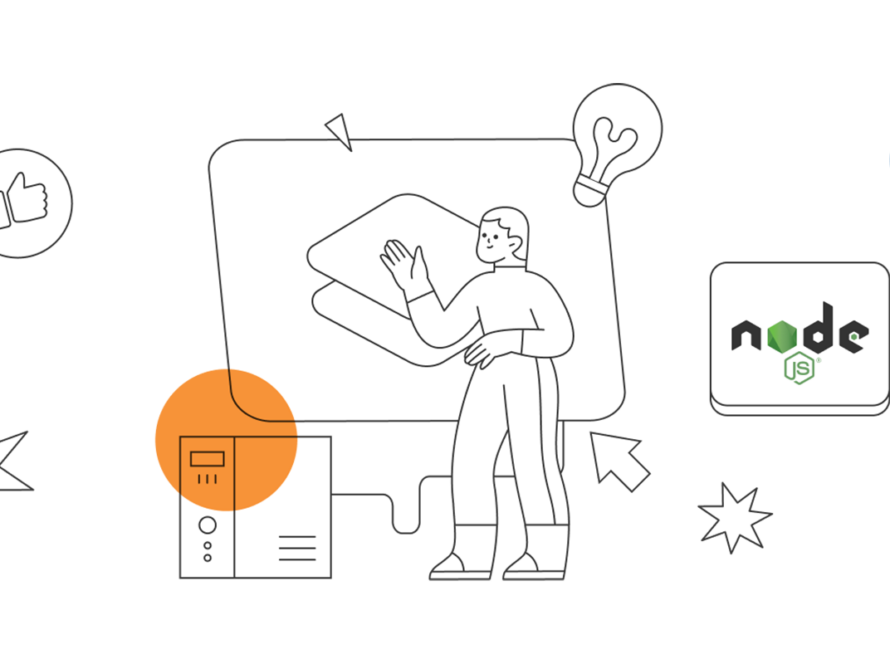In today’s data-driven landscape, where every digital interaction leaves a trail of breadcrumbs, the significance of understanding human behavior cannot be overstated. Have you ever wondered how companies seem to anticipate your needs or how websites tailor content just for you? Enter the world of behavioral analytics.
Behavioral analytics, a powerful discipline at the crossroads of data science and psychology, serves as the compass guiding us through this labyrinth of human actions and decisions. Behavioral analytics is essential for businesses because it offers critical insights into customer behavior, enabling companies to make informed decisions.
By analyzing how customers interact with products and services, businesses can personalize offerings, improve customer experiences, predict trends, reduce churn, optimize marketing strategies, detect fraud, and gain a competitive advantage. It empowers data-driven decision-making, vital for adapting to market changes and ensuring long-term success.
We’ll explore behavioral analytics, breaking down its fundamental ideas and methods. We’ll also highlight why it’s crucial for gaining deep insights into our digital world.
Introduction to Behavioral Analytics
Once you make up your mind to improve the customer experience and invest resources in it, the first thing you need to do is identify where your customer experience lacks and what could be made better. This isn’t something you should do without the right data to back up your decisions.
Behavioral analytics involves collecting data and insights on customer behavior as they interact with your website or app. It can give your team insights on the roadblocks customers face when completing a purchase or where things can be improved.
Without the proper analytics to back up your customer satisfaction efforts, any steps you take to improve your customer experience will be a hit or miss. You risk losing money and time on things that might not matter much to your users, all while you’re bleeding money on bad CX where it really matters.
Customers might not care about whether your header images look good or not. They might be more frustrated with the confusing warning message they keep getting while filling out a form at your platform’s checkout page.
When you’re collecting and paying attention to what behavioral analytics are telling you, this will be easy to catch. Without tracking behavioral analytics, it’s anyone’s guess how much money you will have lost before issues like this catch someone’s attention.
Understanding Customer Experience

In today’s data-driven business landscape, quantitative analytics has become an indispensable tool for organizations seeking to gain insights into customer behavior.
Quantitative analytics provides organizations with a treasure trove of data, offering a bird’s-eye view of customer interactions, preferences, and trends. It allows companies to measure customer satisfaction, track purchase patterns, and identify areas for improvement with precision. In essence, it forms the backbone of informed decision-making.
To truly understand and enhance the customer experience, a bridge must be built between cold, hard numbers and the human element that underpins every interaction.
So, how do we bridge this gap effectively?
- Combine Data and Human Insights: Blend quantitative analytics with qualitative research methods such as customer interviews, surveys, and feedback analysis. This allows you to contextualize the data and uncover the ‘why’ behind customer behavior.
- Create Customer Personas: Develop detailed customer personas based on your data and qualitative insights. This helps in humanizing the data, making it easier to relate to and empathize with your customers.
- Real-Time Feedback Loops: Implement real-time feedback mechanisms to capture customer sentiments as they interact with your brand. This enables you to adapt quickly and enhance the customer experience on the fly.
- Train Your Teams: Ensure that your teams, from data analysts to customer service representatives, understand the importance of customer experience. Encourage collaboration between these disciplines to foster a holistic approach.
- Visualize Data Stories: Use data visualization tools to tell compelling stories that connect quantitative data to real-world scenarios. Visualization can make data more relatable and impactful.
The Benefits of Tracking Behavioral Analytics
The secret to running almost every successful business at every stage – from product development to sales – has always been to ensure customer satisfaction. To put yourself in your customers’ shoes, anticipate and understand their issues and pain points, and then offer them solutions to it.
But there’s always been too much guesswork involved in all of these things. Those who guessed correctly have been successful, while those who don’t put enough focus on their target audience are doomed to settle for mere crumbs of the total market share they could have had.
Advanced technology has revolutionized behavioral tracking, giving us unprecedented insights into human actions and preferences. From sophisticated AI algorithms analyzing online behavior to wearable devices tracking physical activities, technology is capturing data like never before. Here’s how behavioral tracking can be used for the better by businesses.
Step Into Your Customers’ Shoes
Behavioral analytic tracking, powered by advanced technology, has emerged as a transformative tool in understanding and catering to customer needs. By delving into this realm, you essentially walk in your customers’ shoes, gaining an intimate understanding of their digital journey. This level of insight leaves minimal room for error when crafting strategies to enhance their experience and boost conversions.
One significant application of this technology lies in e-commerce. Detailed behavioral tracking allows businesses to monitor not just what customers buy but also how they shop. For instance, it can reveal the specific products customers view, how long they spend browsing, and even when they abandon their carts.
With this wealth of data, businesses can tailor product recommendations, streamline checkout processes, and deploy targeted marketing campaigns, significantly increasing the likelihood of converting browsers into buyers.
Data-Backed Decision Making
Imagine having a digital crystal ball that not only understands how users interact with your products or services but also predicts their future actions. This is the power of behavioral analytics. By observing and analyzing user behaviors, such as clicks, preferences, and journey patterns, organizations gain profound insights into their audiences. These insights enable businesses to optimize user experiences.
Behavioral analytics empower A/B testing, experimentation, and targeted interventions, leading to smarter decisions about product enhancements, marketing campaigns, and customer engagement strategies. They help in retaining customers by spotting early signs of disengagement, reducing churn, and enhancing user satisfaction.
Perhaps most crucially, behavioral analytics provide a continuous feedback loop for decision-makers.
Zone-In On Customer Pain Points
Imagine customers are having trouble with navigating your platform. They can’t find products easily, and you want to rectify this issue.
Without access to behavioral analytics, your best option would have been to run an A/B test for your new navigation design and simply implement it if you observed an uptick in purchases for categories that were hard to find before.
In this method, you noticed an issue, but you had to develop a whole new navigation system to try to solve it. However, with the help of behavioral analytics, you would have had access to data that could help you find answers to questions like:
- Whether the navigation options are hard to find for customers
- Whether category names are unclear
- If the navigation problems arise from incomplete product category sections
And many more.
Through behavioral analytics, you can pinpoint the exact issues your customers are facing.
This can streamline your process to solve these issues. In this particular example, perhaps the navigation issue could have been solved simply by moving certain sections for the more popular products higher up on your navigation lists or highlighting the “categories” section better to make it stand out against the background.
This way, you solved a customer pain point effectively while saving a house of backend work for your design and IT teams!
Better Customer Retention

Behavioral analytics act as a retention superpower by decoding customer actions and preferences. They enable personalized experiences, predict churn, and spotlight improvement areas, helping businesses proactively engage, delight, and retain customers, turning casual users into loyal advocates.
Imagine you go to an e-commerce store you want to make a purchase from, but your experience is less than ideal. Either you experience issues at checkout or the site won’t load, but we bet you’d leave instantly and promise yourself never to return again.
This is something all e-commerce brands wish to avoid, which is why it is so important to proactively monitor behavioral analytics and make sure that you catch all these issues before they make you lose valuable customers and loyal clientele.
The Best Ways to Track Customer Behavior
Now that we know why tracking behavioral analytics is important, let’s see all the ways we can do so. This list contains some of the most popular ways businesses collect and track behavioral analytics, as well as information on what you can learn from them.
Some areas that e-commerce platforms place extra focus on include how customers interact with forms, whether the checkout process is smooth or not, and pinpointing any issues with a platform’s overall design that you couldn’t catch internally prior to making those changes live.
Heat Mapping
Heat maps are a great way to see how customers interact with your platforms, how far they scroll down, and what areas catch their focus the most. Heat mapping can be used to see whether particular parts of your platform catch more attention and which ones visitors are completely glossing over.
This can be useful when you want to attract customer focus to particular areas of the site or want to make sure your platform’s design is eye-catching as well as good for conversions.
If customers don’t scroll down far enough and miss an important section on your platform, you can decide, based on this kind of data, whether you want to move it around a bit for better conversions.
Session Replays
Session replays might not give you collective insights into how most of your visitors and customers interact with your platforms, but there’s no better way to put yourself in your customers’ shoes.
Through session replays, you can access and analyze a single user’s journey across your site. You can see what parts of your platform they interact with the most, which parts of the platform they skip over, and see if they face any technical difficulties while navigating your app or website.
Customer Journey Analysis or Funnel Analysis
Have you ever wondered exactly how your customers end up converting? Sure, you have a vague idea and general data to back it, but sometimes you can benefit from analyzing what sequence of events leads customers from the point where they first interact with your business to making a purchase or signing up for the premium subscription.
That’s exactly what funnel analysis or customer analysis journey analysis does. As your business grows, you’ll have more funnels and marketing channels to analyze, but through this method, you can find out
- What are your best marketing assets?
- Particular points of friction that customers face
- What can be improved, and what marketing methods and funnels to prioritize
Having all this information by your side can help you get the most out of your marketing campaigns. It’s a great way to keep your customers at the center of all your marketing decisions instead of numbers.
Form Analysis
For any kind of online platform that interacts with users, it’s extremely important to make sure any forms on the website are easy for users to fill out and submit.
Form analysis can help you identify issues on checkout forms, sign-up forms, surveys, online demo requests, etc. The biggest priority here is to catch any issues and errors that may be leading to customers who would otherwise convert to leaving your platforms, never to return again.
Here are some things you can look out for through form analysis:
- High click rates in a certain area of a form can mean customers or users are having trouble with the form.
- Track how many users fill out the form and how many actually press submit. If a high percentage of people who interact with the form don’t press submit, it could be because of a faulty error message or confusing instructions that are putting people off.
- You can also judge if people are taking too long to fill out the forms. In that case, you might increase form submissions by simplifying the process.
Segmentation
Segmentation can be based on a multitude of factors, from demographics like age and location to psychographics like lifestyle and interests. The goal is to create segments that reflect real-world customer behavior. This approach transforms raw data into actionable insights, allowing you to tailor your products, services, and marketing efforts to specific customer groups.
For instance, a retail business might segment customers into categories like “Frequent Shoppers,” “Seasonal Buyers,” or “Discount Seekers.” With this knowledge in hand, they can customize their marketing messages and promotions to resonate with each group’s unique preferences. Segmentation isn’t just about tracking past behavior; it’s about predicting future actions.
Behavioral Analytics Tools
In today’s data-driven world, Behavioral Analytics Tools act as guides, helping businesses navigate customer preferences, employee productivity, and market trends. These tools decode consumer habits and improve internal processes by revealing hidden insights in data.
- Google Analytics
- This is a foundational tool for understanding website and app performance, helping businesses make data-driven decisions.
- Top Features:
- Traffic Analysis: Tracks website visitors, their sources, and demographics.
- Conversion Tracking: Monitors goals and e-commerce transactions to optimize sales funnels.
- Behavior Flow: Visualizes how users navigate through your site.
- Real-Time Data: Provides immediate insights into current site activity.
- Custom Reports: Allows the creation of tailored reports to focus on specific metrics.
- Mixpanel
- Mixpanel excels in user-centric analysis, enabling businesses to improve user engagement and retention.
- Top Features:
- Event Tracking: Monitors user interactions with your website or app.
- Cohort Analysis: Segments users into cohorts to study their behavior over time.
- Funnel Analysis: Identifies drop-offs in user paths to optimize conversion rates.
- A/B Testing: Allows experimentation to improve user experience.
- Notifications: Sends targeted messages to users based on their behavior.
- Amplitude
- Amplitude specializes in product analytics, helping businesses enhance product features and user experiences.
- Top Features:
- User Behavior Tracking: Records user actions within the product.
- Retention Analysis: Measures user engagement and long-term usage.
- Predictive Analytics: Forecasts user behavior and identifies potential churn.
- Integrations: Seamlessly connects with various platforms and tools.
- User Segmentation: Divides users into meaningful groups for targeted analysis.
- Adobe Analytics
- Adobe Analytics is an enterprise-level tool that offers robust marketing and customer analytics.
- Top Features:
- Marketing Attribution: Tracks the performance of marketing campaigns.
- Customer Journey Analysis: Visualizes the customer’s path across channels.
- Advanced Segmentation: Allows deep dives into customer segments.
- Real-Time Analysis: Provides up-to-the-minute data for rapid decision-making.
- AI and Machine Learning: Utilizes AI to discover hidden insights.
- HotJar
- HotJar is focused on user feedback and usability testing, helping businesses improve website and app design.
- Top Features:
- Heatmaps: Visualizes where users click, move, and scroll on your site.
- Session Recordings: Records user sessions for in-depth analysis.
- Surveys and Feedback: Gathers user opinions and feedback.
- Conversion Funnels: Identifies drop-off points in the conversion process.
- User Polls: Collects targeted insights through on-site polls and surveys.
Want to Take Things Further? Here Are Your Next Steps
There are many SaaS solutions out there to help you get started on your behavioral analytics tracking journey. At the same time, many organizations prefer to have custom behavioral tracking solutions that are tailored to their specific needs.
Behavioral analytics tools like Google Analytics, Hotjar, Amplitude, and custom solutions empower businesses to understand user behavior, optimize their online presence, and create data-driven strategies for growth. They play a pivotal role in improving user experiences, increasing conversions, and ultimately driving business success in the digital age.
One of the biggest benefits of using custom solutions for your behavioral analytics tracking includes lean and custom UIs that don’t confuse you, platforms that offer only what you need while leaving a lot of room for scalability, and having control of your own analytic tracking channels.
Reach out to ExperLabs today to discuss any possible solutions for your brand!


